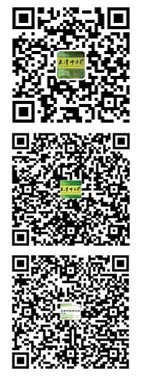| 摘要: |
| [目的] 探索化腐再生法调控创面自噬促进糖尿病皮肤溃疡愈合的作用机制。[方法] 将60只雄性SD大鼠随机分为4组,模型组(MX组)、化腐组(HF组)、再生组(ZS组)和化腐再生组(HFZS组),适应性喂养1周后采用腹腔注射链脲佐菌素(STZ)+糖尿病大鼠全层皮肤切开+连续3 d肌肉注射醋酸氢化可的松制备糖尿病皮肤溃疡模型。模型制备成功后每日常规换药1次,MX组应用凡士林油纱换药,HF组应用菠萝蛋白酶纱布换药,ZS组应用橡皮生肌膏外涂换药,HFZS组应用橡皮生肌膏外涂联合菠萝蛋白酶纱布换药。于换药治疗后第0、3、7、14天4个时点随机选取各组3只大鼠观察创面生长情况,计算创面面积变化、创面愈合率及组织病理染色,并于换药后第7天检测各组创面组织自噬相关蛋白及mRNA表达。[结果] 各组在治疗前创面面积相比差异无统计学意义(P>0.05),在治疗第7天和第14天时,HFZS组的创面面积明显小于其他3组,创面愈合率高于其他3组,差异有统计学意义(P<0.01或P<0.05)。组织病理染色提示各组治疗前创面均出现水肿,伴较多炎性细胞浸润,在治疗后第3天和第7天,各组创面组织炎性细胞浸润逐渐减少,水肿逐渐消退,其中HFZS组效果最好,第14天,HF组和ZS组浸润炎性细胞少于MX组,而HFZS组炎性细胞明显少于其他3组,肉芽基本无水肿,并可见较多成纤维细胞和胶原组织沉积。治疗至第7天时,与MX组相比,HF组Beclin-1蛋白及mRNA差异无统计学意义(P>0.05),LC3Ⅰ/Ⅱ蛋白及mRNA升高,P62蛋白及mRNA降低,差异有统计学意义(P<0.01或P<0.05),与HF组相比,HSZS组LC3Ⅰ/Ⅱ蛋白及mRNA升高,P62蛋白及mRNA降低,差异有统计学意义(P<0.01),与ZS组相比,HSZS组LC3Ⅰ/Ⅱ蛋白及mRNA升高,P62蛋白及mRNA降低,差异有统计学意义(P<0.05)。[结论] 化腐再生法能够促进糖尿病大鼠皮肤溃疡愈合,其作用机制可能与其促进创面自噬通路激活有关。 |
| 关键词: 化腐再生法 橡皮生肌膏 自噬 糖尿病皮肤溃疡 |
| DOI:10.11656/j.issn.1672-1519.2025.04.14 |
| 分类号:R268 |
| 基金项目:国家重点研发计划项目(2019YFC1709303);国家自然科学基金项目(81973853);天津中医药大学第二附属医院"青苗计划"项目(QMJH202018);天津市卫生健康委、天津市中医药管理局中医/中西医结合科研项目(2021055)。 |
|
| The mechanism of putridity-resolving and regeneration therapy for promoting the healing of diabetes skin ulcers by regulating wound autophagy |
|
LI Linlin1, GUO Jing2, ZHU Zhaojun1, LU Xuya1, ZHANG Zhaohui1
|
|
1.Department of Surgery of Traditional Chinese Medicine, The Second Affiliated Hospital of Tianjin University of Traditional Chinese Medicine, Tianjin 300250, China;2.Department of Dermatology, The First Affiliated Hospital of Zhejiang University of Traditional Chinese Medicine, Hangzhou 310006, China
|
| Abstract: |
| [Objective] To explore the mechanism of action of the chemo-rot regeneration method to regulate wound autophagy to promote the healing of diabetic skin ulcers. [Methods] Sixty male SD rats were randomly divided into four groups:the model group(MX group),the putrefaction group(HF group),the regeneration group(ZS group),and the putrefaction-regeneration group(HFZS group). The model of diabetic skin ulcers was established by intraperitoneal injection of streptozotocin(STZ),followed by a full-thickness skin incision in diabetic rats,and intramuscular injection of hydrocortisone acetate for three consecutive days after one week of acclimatization feeding. After successful model establishment,wound dressings were changed routinely once daily. The MX group received petroleum jelly-impregnated gauze changes,the HF group received bromelain-soaked gauze changes,the ZS group received topical application of Xiangqi Shengji Ointment,and the HFZS group received a combination of Xiangqi Shengji Ointment and bromelain-soaked gauze changes. At four time points(0,3,7,and 14 days) after the initial dressing change,three rats from each group were randomly selected to observe wound healing. The changes in wound area,wound healing rate,and histopathological staining were assessed. Additionally,the expression of autophagy-related proteins and mRNAs in wound tissues was detected on the 7th day after the initial dressing change. [Results] There was no statistically significant difference between the groups compared with the trabecular area before treatment,and at the 7th and 14th days of treatment,the trabecular area of the HFZS group was significantly smaller than the other 3 groups,and the trabecular healing rate was higher than that of the other 3 groups,with statistically significant differences(P<0.01 or P<0.05). Histopathological staining suggested that all groups showed edema with more inflammatory cell infiltration before treatment,and on the 3rd and 7th days after treatment,the infiltration of inflammatory cells in the trauma tissue of each group gradually decreased,and the edema gradually receded,among which the HFZS group had the best effect,and on the 14th day,the infiltrated inflammatory cells in the HF group and the ZS group were fewer than those in the MX group,while the inflammatory cells in the HFZS group were significantly fewer than those in the other 3 groups,and the granulation was free of edema and more fibroblasts and collagen tissue was seen to be deposited. On the 7th day of treatment,compared with the MX group,the HF group showed no statistically significant difference in Beclin-1 protein and mRNA,increased LC3Ⅰ/Ⅱ protein and mRNA,and decreased P62 protein and mRNA,with a statistically significant difference(P<0.01 or P<0.05),and compared with the HF group,the HSZS group showed increased LC3Ⅰ/Ⅱ protein and mRNA,and decreased P62 protein and mRNA,with a statistically significant difference(P<0.01 or P<0.05). mRNA decreased,and the difference was statistically significant(P<0.01). Compared with the ZS group,LC3Ⅰ/Ⅱ protein and mRNA increased and P62 protein and mRNA decreased in the HSZS group,and the difference was statistically significant(P<0.05). [Conclusion] The putridity-resolving and regeneration therapy can promote the healing of skin ulcers in diabetic rats,and its mechanism of action may be related to its promotion of the activation of the autophagic pathway in the traumatic surface. |
| Key words: putridity-resolving and regeneration therapy Xiangqi Shengji Ointment autophagy diabetes skin ulcer |
